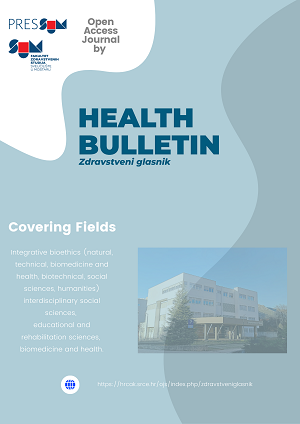THE IMPORTANCE OF CORRECTIVE EXERCISES IN THE TREATMENT OF SCOLIOSIS IN SCHOOL-AGE CHILDREN
Keywords:
treatment, scoliosis, kinesiotherapy, exercise, childAbstract
Scoliosis is the most common orthopedic deformity in children, characterized by a three-dimensional
curvature of the spine; lateral inclination in the frontal plane, rotation in the transvesical plane and
alteration in the sagittal plane (anterior or posterior). The problem of improper posture in children is one
of the significant problems of the modern way of life, and it appears at an increasingly early age. It is
estimated that there are around 10.5 million scoliosis sufferers on the planet. About 60% to 80% of all
cases are detected in women, and they are five to eight times more likely to progress and require
treatment. Progression occurs during the years of growth, from the age of 7 the growth is 36%, and from
the age of 10 even 52%.
Specific exercises are the main instrument of conservative treatment of scoliosis. They have been used
since 500 BC, when Hippocrates, followed by Galen, introduced their use as a means of maintaining the
flexibility of the chest wall.
Over the years, various methods have been developed, the most famous of which is Schroth (Germany),
then Bspts (Spain), Seas (Italy), Dopomed (Poland). The exercise program consists of strengthening
certain muscle groups and of performing respiratory exercises and it contains: breathing exercises,
stretching exercises for shortened muscles, exercises for strengthening the paravertebral musculature, and
posture exercises. A good and effective kinesiotherapy program should be based on a kinesiological
analysis of selected kinesiological operators.















